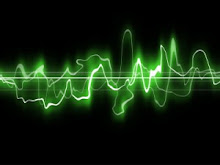With the ever-so-slightest hint of encouragement from Jenny O (see comments, 30th January), and then more earnest encouragement from my nephew and my boss, and despite more fervent attempts at dissuasion from almost everyone else I know, I have been teetering on the edge of getting a banjo for a couple of weeks now. But since PBS included The Melody of Rhythm, a fascinating triple concerto for banjo, double bass, tabla and orchestra, as one of their feature albums last week (which I bought today), there is now little more than a bee’s dick separating me from a purchase which, I fear, everyone within earshot of me may soon come to regret.
It reminds me of one day, about 23 years ago, when I was so bowled over by a recording of the Elgar Cello Concerto, that I went out and bought a cello in the hope that I might learn to play that goose-bump-inducing opening.
It has been a different journey with the banjo, however. Until very recently, I had thought of it as a colourless, characterless instrument. It didn’t seem to have much by way of a range in pitch, and even less in dynamics. But then, listening to it a little more carefully, hearing it blending with the likes of Gillian Welch and Neko Case and Eels, and Middle East and Mumford & Sons and, of course, Sufjan Stevens, I have learned that what I had once dismissed as a lack of personality was in fact just a very clever, and very dry, wit.
And when it’s played sensationally, its notes picked out at the speed of sparks crackling off a fire in the American Wild West, as it is in the hands of Béla Fleck, you can’t help but marvel at what this instrument can do. And when you partner it with the gruffness of a double bass, and the exotic earthy percussion of the Indian tabla, you find bits of the world coming together in ways that even the most optimistic musical diplomat would have never thought possible.
But The Melody of Rhythm was not an easy album to find. With Béla Fleck on the banjo, and Edgar Meyer on bass, it could easily have been in the jazz section, and with Leonard Slatkin and the Detroit Symphony Orchestra, the classical section would not have been too much of a long shot, either. But with Zakir Hussain on the tabla, and with such a cosmopolitan infusion of sounds throughout the music, I thought the world section would have been the best bet. But I in fact found it in the country section, the last place I thought to look, despite the unmistakeable bluegrass influences throughout.
'The Melody of Rhythm' is in fact the name of the three movement concerto which is the centrepiece of the album, both thematically and in its place on the disc itself. It plays like a spirited dialogue between the orchestra and the trio of musicians, each bouncing ideas off one another, building them and elaborating them, at times speaking over each other, at times one finishing the other’s sentences. It hovers between eastern and western tonalities, bluegrass and jazz rhythms building the bridge between the two.
In some ways, the banjo seems to dictate the pace of things in the first movement, the double bass in the more lyrical second movement and the tabla in the more percussive finale. But always the three solo instruments play as a family, all so different in personality and yet all very much from the same gene pool. Their diversity is alive and vibrant in the solo passages, their commonality in those of the orchestra.
The playing is phenomenal. The banjo and tabla play like twins, their frenetically fast beat in perfect sync, one with the other. The bass bursts with life and colour, stretching itself to new limits, sometimes giving a kind of jazz swing beneath the bubble and boil of its siblings, sometimes veering off on its own lyrical journey.
On either side of the concerto are three pieces just for the trio, all derived from, or somehow connected to, the music of the concerto.
‘Bahar’, ‘Out of the Blue’ and ‘Bubbles’ all help set the stage for the bigger orchestral work, building the tonal world, and letting us hear just what incredible voices these three instruments have.
The three pieces that follow the concerto, ‘Cadence’, ‘In Conclusion’ and ‘Then Again’ are a little more adventurous, more unconventional in their musical flavour, playing even more outside the instruments’ comfort zones than in the earlier pieces.
The Melody of Rhythm is a wonderful, superbly constructed musical journey – a journey that shows you sights that you might never have taken the time to notice before, and lets you see just how interesting and colourful they really are.
Now I can’t wait to get a double bass, some tabla, and an orchestra, and play the whole thing myself.
Subscribe to:
Post Comments (Atom)


For another take on the banjo check out Otis Taylor's album of a few years back "Recapturing the Banjo" where he attempts (and maybe succeeds - I'll leave that for you to decide) to reclaim the African American roots of an instrument that is now associated mostly with country, folk and bluegrass traditions. Travels through spirituals, rock (via Hey Joe), Cajun and more.
ReplyDeleteOh - and thanks for the birthday wishes! Call in any time!
- Breakfast Matt
Thanks for the pointer Matt ... sounds like it's definitely destined for the shopping list, despite my resolve to only buy two a week now, both of which have already been bought this week. And that's not counting today's internet order (which was the Lightnin' Hopkins album you said we all had to buy), but then internt orders don't count because, well, just because. Loved the Otis Taylor you played this morning, too.
ReplyDeleteThanks again (and again and again) for the fantastic music.
http://www.youtube.com/watch?v=Uzae_SqbmDE
ReplyDelete:-)